What is press brake tonnage?
- During the press brake bending process, the force between the upper and lower dies is applied to the material, causing the material to undergo deformation.
- Working tonnage refers to the bending pressure during bending.
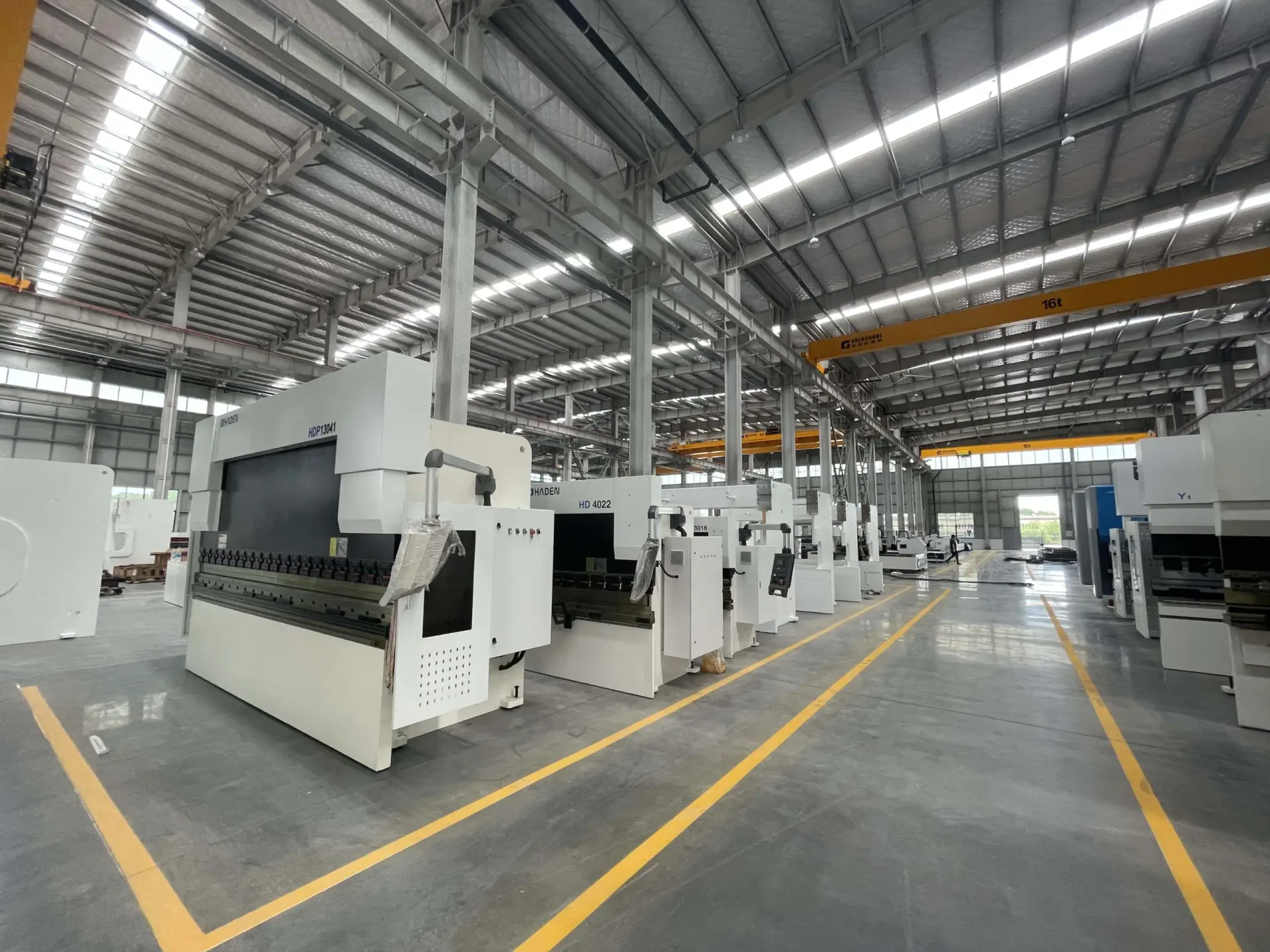
How to calculate tonnage of a press brake?
Bending Force F = Bending Width * Length * 8
Bending force (unit: Ton), plate thickness (unit: mm), plate length (unit: m)
Yes, it is nothing wrong with your eyes.
Suitable for estimating all the press brake tonnage calculate.
Of course, this is low carbon steel, if it is stainless steel, multiply it by 2.
For example: 1mm thick stainless steel, 3meter length. Bending force = 1x3x8x2=48T, so your press brake bending machine has a bending force of at least 48T.
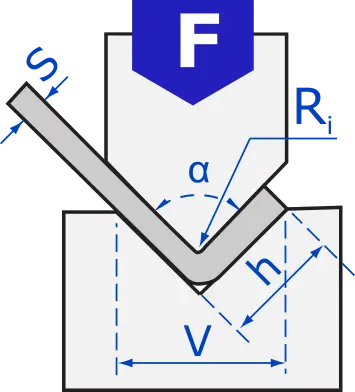
Air Bending or Bottom Bending?
- First,all the methods introduced in this article are based on air bending.
- For other bending methods, please refer to another article.
- Here is a brief introduction. Air bending is the most common bending method.
- Because it can be applied to bending at various angles, the required bending force is relatively small, the requirement for press brake dies hardness is also relatively low, the mold life can be extended.
- Therefore, some press brake tooling manufacturers do not recommend bottom bending, because there are responsibilities and risks in the process.
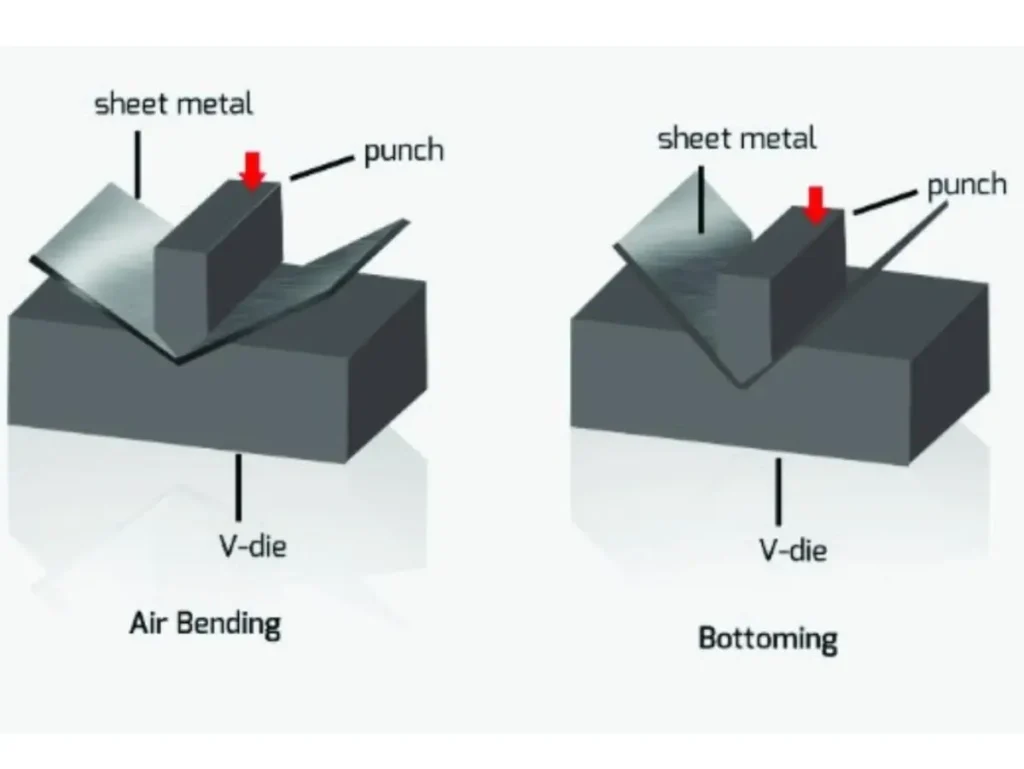
Air bending force tonnage chart
This bending force tonnage chart, calculated based on a bending material with a tensile strength of δb = 420 MPa and a length of 1 meter. (Low-carbon steel)
The internal radius R corresponds to approximate 16% of the die opening V.
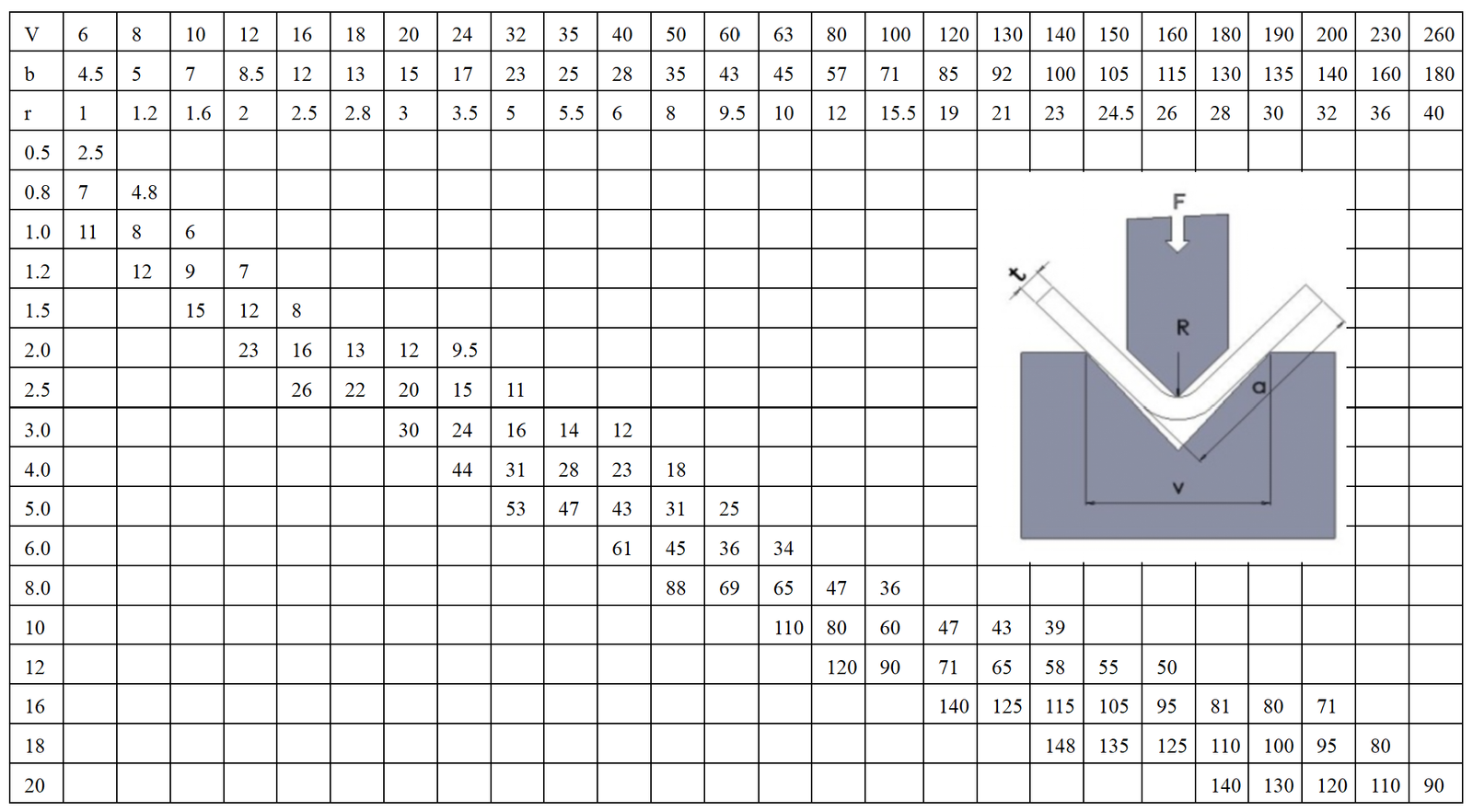
Tensile strength table of common materials
- Different materials have different tensile resistance coefficients K.
- Which are usually expressed by the material’s yield strength in MPa,
- i.e. Newtons per square millimeter (N/mm²).
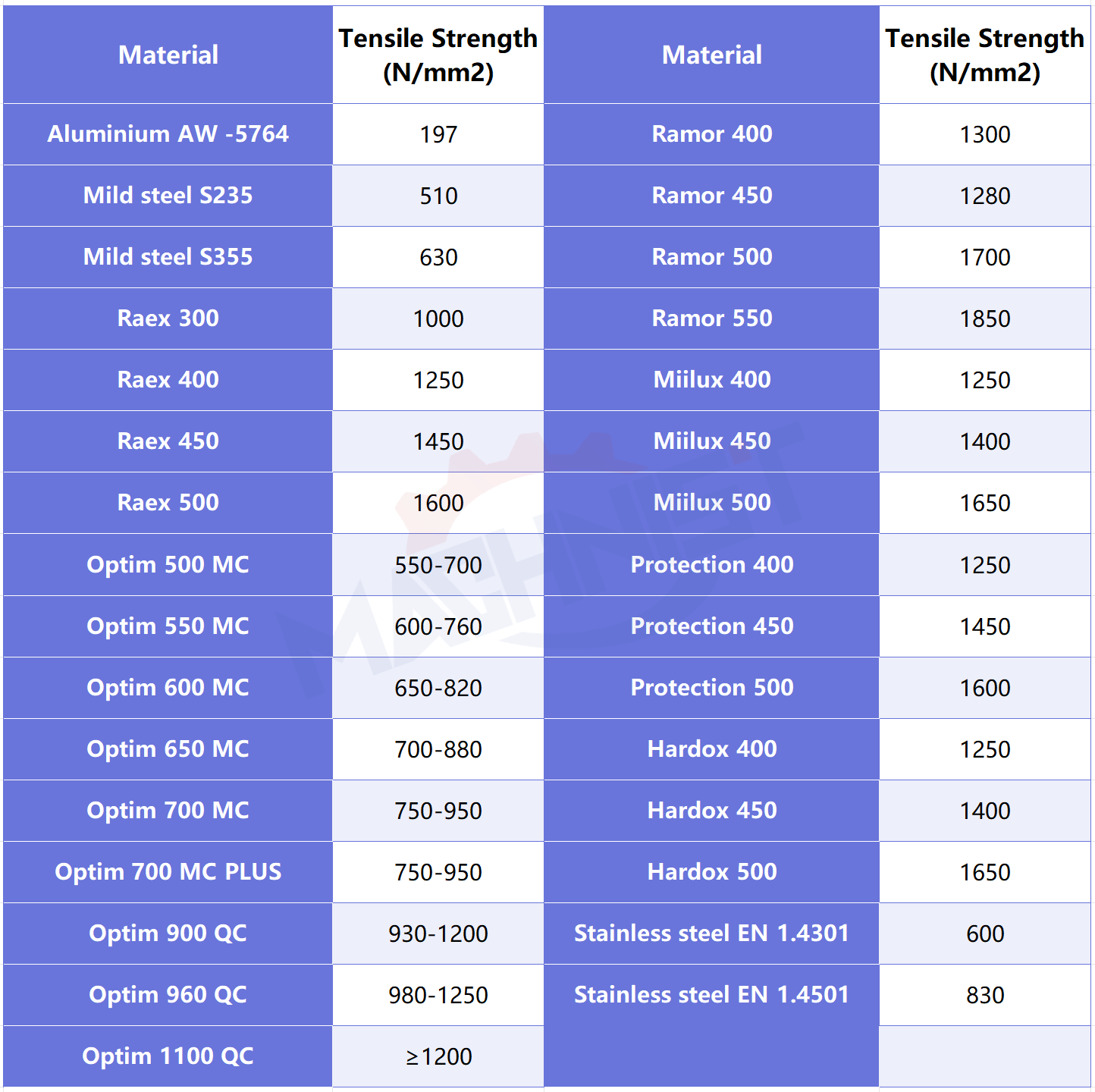
Recommended die opening V for air bending

Bending force on other common material

CNC press brake system caculate bending force automatic.
- In all CNC systems, the bending force and angle formulas are already built in.
- You only need to enter the corresponding material, bending thickness and length, and select the edited mold.
- The system will automatically calculate the tonnage.

- Even in high-end models, you don’t need to choose the thickness and length of the material.
- Place a piece of material at random, the system’s visual system will automatically identify the size.
- With the angle detection function, the angle accuracy is 100% guaranteed.
- Moreover, the system’s automatic compensation function will be turned on to ensure the straightness of the workpiece material.
- Of course, such a system is even more expensive than an ordinary bending machine.
- Combined with a robot arm, you can achieve 24-hour dark work.
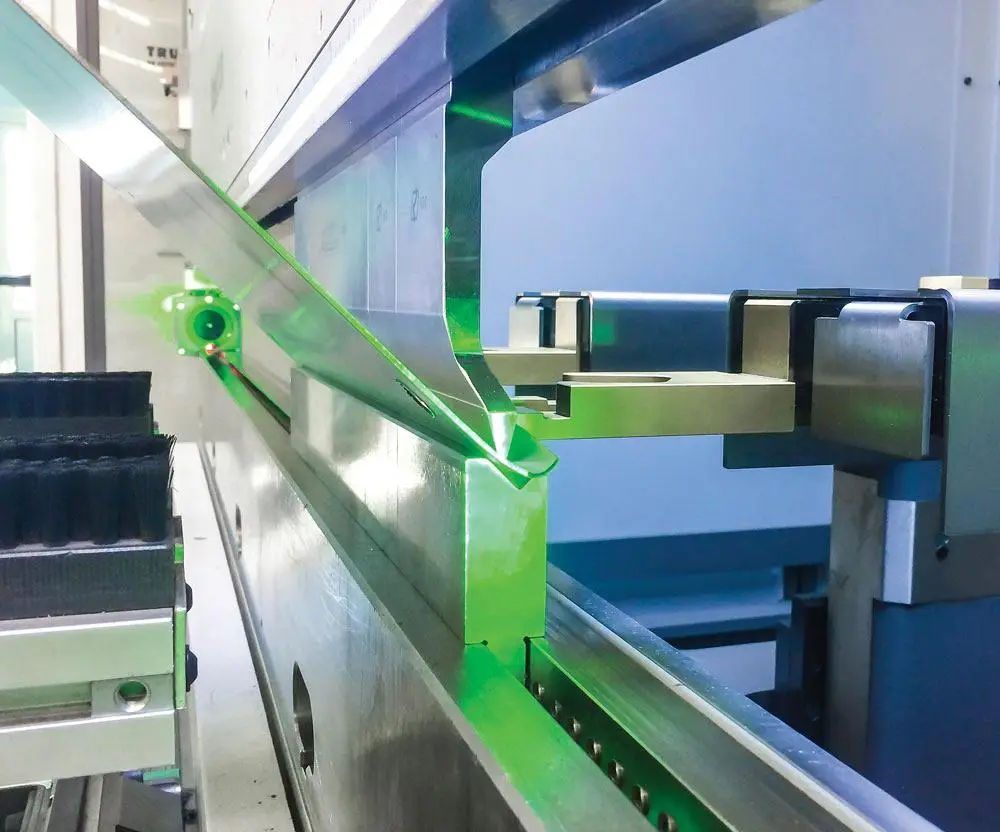
Sheet metal press brake tonnage calculation formula
- The calculation of bending force not only takes into account the mechanical properties of the material, but also includes the plate thickness, plate width, lower die slot width and more complex geometric principles.
- Including bending moment, bending stress, etc.
- The formula is: P = 650 * S² * L / V
- P = bending force (unit: KN)
- S = plate thickness (unit: mm)
- L = plate width (unit: m)
- V = lower die opening (unit: mm)
- V die opening is usually recommended to be 8-10 times the plate thickness to ensure effective bending effect.
Application of pressbrake tonnage calculator
Determine the appropriate process parameters
- Bending force is one of the basic parameters of bending processing.
- If the bending force is too large or too small, it will have an adverse effect on the quality of the workpiece.
- Therefore, in the processing process, it is very important to select the appropriate bending force according to the thickness and properties of the plate.
Improve processing efficiency
- The size of the bending force directly affects the speed of the bending process.
- When the bending force is insufficient, the processing speed will slow down.
- when the bending force is too large, it will increase the difficulty and time of processing.
- Therefore, mastering the appropriate bending force can effectively improve the processing efficiency.
Ensure processing quality
- The size of the bending force is also related to the processing accuracy of the workpiece.
- If the bending force is unclear or inappropriate, it will cause problems such as deformation of the workpiece and uneven surface, which will affect the overall processing quality.
- Therefore, correctly calculating and applying the bending force is the key to ensuring processing quality.
Summary
- The calculation formula of bending force is determined based on factors such as sheet thickness, bending angle, bending length, groove width, etc.
- Through reasonable calculation, the force required in the bending process can be predicted and controlled, thereby ensuring the quality and safety of the metal sheet bending process.
- In practical applications, it is necessary to measure and calculate parameters according to specific circumstances to obtain accurate bending force values.







